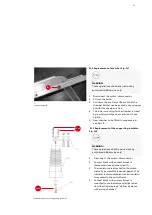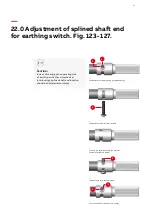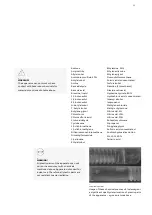
69
Usage of these chemicals can result in damage or
a significant quality deterioration of plastic parts
of the apparatus – eg. see picture above.
Acetone
Acrylonitrile
Allyl alcohol
Ammonium sulfide, 40%
Amyl alcohol
Aniline
Benzaldehyde
Benzoic acid
Bromine, liquid
1,3-butanediol
1,4-butanediol
2,3-butanediol
N-butyl alcohol
T-butyl alcohol
Butylene glycol
Chloroform
Chlorosulfuric acid
Crotonaldehyde
Cyclohexane
1,2-dichloroethane
1,2-dichloroethylene
Difluoromonochloromethane
Dimethylformamide
1,4-dioxane
Ethyl alcohol
Ethylamine, 33%
Ethylene diamine
Ethylene glycol
Fluorodichloromethane
Formic acid, concentrated
Furfuralcohol
Gasoline (5% methanol)
Glacial acetic acid
Hydrazine hydrate, 80%
Hydrochloric acid, concentrated
Isoamyl alcohol
Isopropanol
Methylene chloride
Methyl ethyl ketone
Nitric acid, 2%
Nitric acid, 10%
Nitric acid, 30%
Potassium chlorate
N-propanol
Propylene glycol
Sulfuric acid, concentrated
Sodium hydroxide solution
5%, 10%, 50%
Tartaric acid
—
128 Cracking of rods
_
WARNING!
The apparatus can not work or have
contact with hazardous chemicals for
materials mentioned in table above.
_
WARNING!
All plastic parts of the apparatus can not
work or have contact with chemicals
mentioned above. Apparatus intended for
indoor use. Therefore, all plastic parts are
not resistant to solar radiation




































